Introduction
Business turnaround strategies are essential for organizations seeking to overcome financial distress and achieve prosperity. These strategies involve a comprehensive approach that combines financial planning and management techniques to drive significant transformation. In the case of Nets, a provider of digital payment solutions, the company embarked on a project to revolutionize information delivery and enhance user engagement.
This project reflects a key aspect of turnaround management: reforming internal processes to yield tangible improvements. Turnaround projects are crucial in industries like finance and banking, where stringent regulations require ongoing staff training for compliance. Consultants play a vital role in providing specialized knowledge and fresh ideas, leading to cost savings and successful project outcomes.
The process of a turnaround project consists of three phases: planning and preparation, execution and management, and post-turnaround evaluation for continuous improvement. CFOs must carefully navigate each phase, crafting a detailed project proposal, coordinating complex transitions, and assessing outcomes against initial objectives. Successful turnarounds require proactive strategies, effective communication, stakeholder management, and a focus on long-term sustainability.
CFOs must also optimize turnaround time by prioritizing tasks, leveraging advanced technologies and automation, streamlining decision-making, and fostering cross-functional collaboration. The integration of emerging technologies like artificial intelligence and data analytics is crucial for future success in a competitive market. By embracing these strategies and trends, CFOs can navigate business turnarounds with precision and drive their organizations towards long-term prosperity.
Understanding Turnaround Projects
Business turnaround approaches are crucial for organizations aiming to overcome periods of financial distress and steer towards prosperity. These strategies encompass a comprehensive approach, combining insightful financial planning with astute management techniques to usher in a period of significant transformation. A compelling example is Nets, a provider of digital payment solutions with a rich history spanning over five decades. Faced with the challenge of presenting intricate technical data in an accessible way, Nets initiated a project to revolutionize information delivery, enhancing user engagement and fostering self-discovery among its clients. In alignment with the objective to streamline the onboarding process for new hires, the company's initiative reflects a critical facet of transformation management: the reformation of internal processes to yield tangible improvements.
Industries such as finance and banking, where Nets operates, are often subject to stringent international regulations, necessitating ongoing staff training to ensure compliance. This regulatory environment emphasizes the significance of effective turnaround approaches that not only tackle financial restructuring but also take into account operational and regulatory compliance as key components. The evolution process of these organizations reflects the larger economic patterns, where labor, politics, technology, and demographics converge to shape corporate approaches.
Amidst this landscape, the value of consulting expertise cannot be overstated. Consultants offer an external perspective grounded in specialized knowledge, from navigating industry-specific challenges to optimizing day-to-day operations. Engaging consultants can bring forth a plethora of benefits, including the infusion of fresh ideas and cost savings over the long term. Moreover, statistics indicate a troubling rate of achievement for technology initiatives, with favorable results documented for only 16% to 30% of undertakings. This emphasizes the importance of robust executive support and proactive management of change in guaranteeing success of initiatives and, as a result, the effective execution of business transformation strategies.
Phases of a Turnaround Project
Leading an organization through a successful transformation requires a strategic approach divided into three key phases: planning and preparation, execution and management, and post-transformation evaluation for ongoing improvement. At first, CFOs must create a comprehensive proposal, including objectives, extent, prerequisites, and timelines, guaranteeing a transparent roadmap for the complete initiative. The execution phase then focuses on managing the intricacies of the transition, often involving complex technical data and operational changes, much like Nets' approach in revamping its digital payment solutions. Finally, the post-turn turnaround phase is crucial for assessing the undertaking's outcomes, benchmarking against initial objectives, and integrating lessons learned into future strategies. This continuous improvement ethos is evidenced by the instructional design philosophy employed by Nets, aiming to foster self-guided discovery among users and staff. Using a planning timeline can streamline this process, providing a visual representation of task sequences and milestones, aiding in effective coordination and risk management. The significance of these stages is highlighted by technology endeavor statistics, which uncover a moderate success rate of 16% to 30%, frequently because of a absence of executive sponsorship and change management. By following these structured phases and gaining insights from industry case studies, CFOs can enhance their projects, increasing the chances of a successful transformation and sustainable growth.
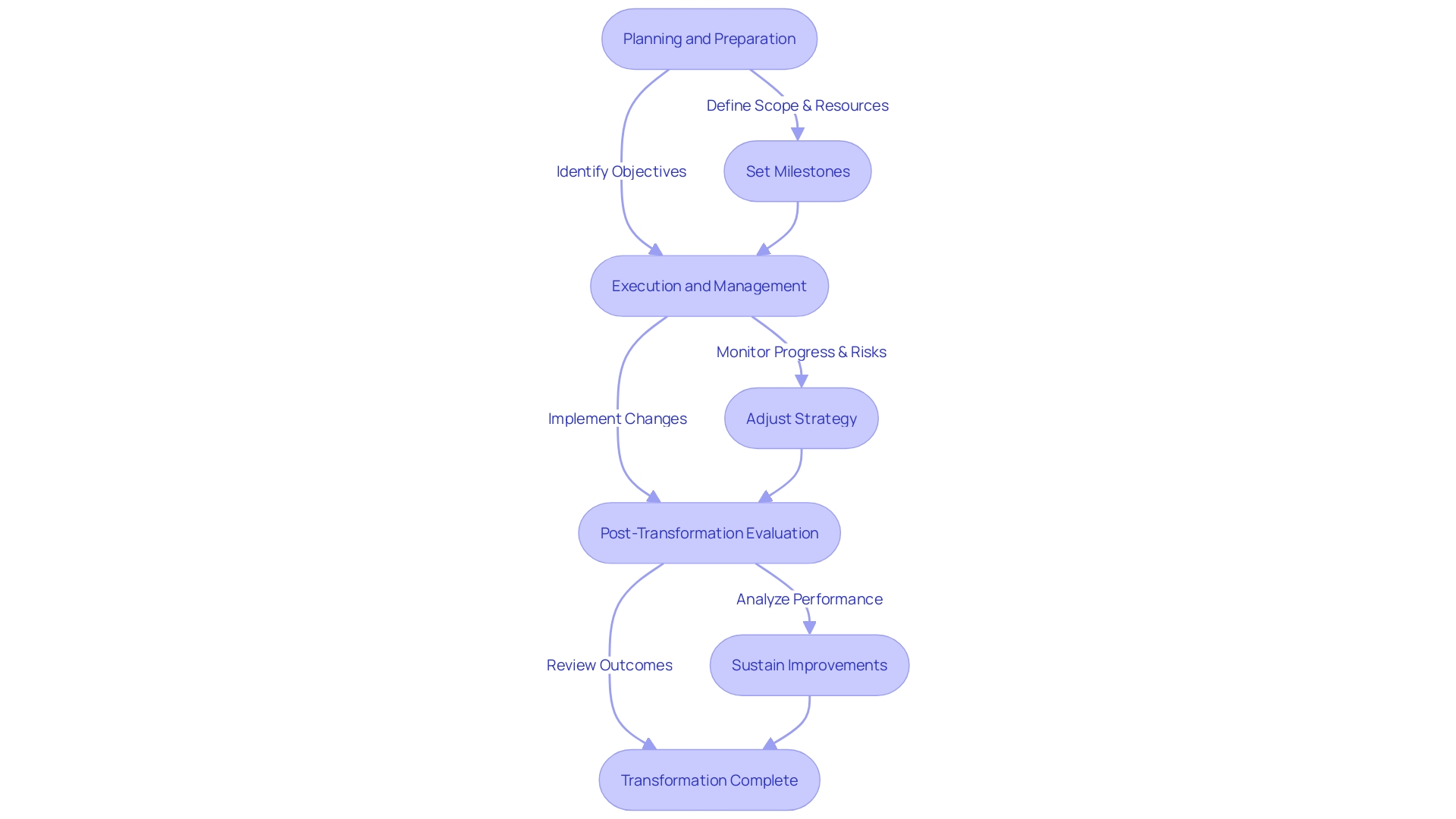
Planning and Preparation
Establishing the foundation for a business transformation is a meticulous procedure, one that necessitates a thorough assessment of the company's fiscal health. This initial stage is pivotal, as it involves pinpointing the primary hurdles as well as the potential opportunities that lie ahead. Developing a well-planned strategy is a crucial step in this phase, involving clear goals, actionable tactics, and a sequence of steps for successful implementation.
A real-world illustration of this can be seen in the efforts of the City of Thunder Bay, Ontario. The city leveraged a grant from the Federation of Canadian Municipality's Municipal Asset Management Program to enhance its Asset Management Plan and Future-Ready Roadmap. This strategic planning not only improved city services but also emphasized the importance of maintaining expertise amidst staff transitions. Similarly, agile and adaptive methodologies, like those recommended by experts advocating for iterative development and continuous feedback, are integral to a turnaround's effectiveness.
Utilizing systems thinking can also play a significant role in transformation efforts. As evidenced by the Building Healthy Cities initiative's dynamic systems map, understanding the interplay of various factors is critical for successful planning. Moreover, the importance of involving all affected parties from a project's inception to its completion cannot be overstated. This inclusive approach, underscored by statistics highlighting the necessity of engaging every stakeholder, ensures that the transformation journey is clear and compelling for everyone involved.
In conclusion, a CFO must navigate through this intricate phase with a clear vision, ensuring the involvement of all relevant stakeholders and the establishment of a robust communication plan. By doing so, the basis for a successful company transformation is solidified, setting the stage for the implementation phase that follows.
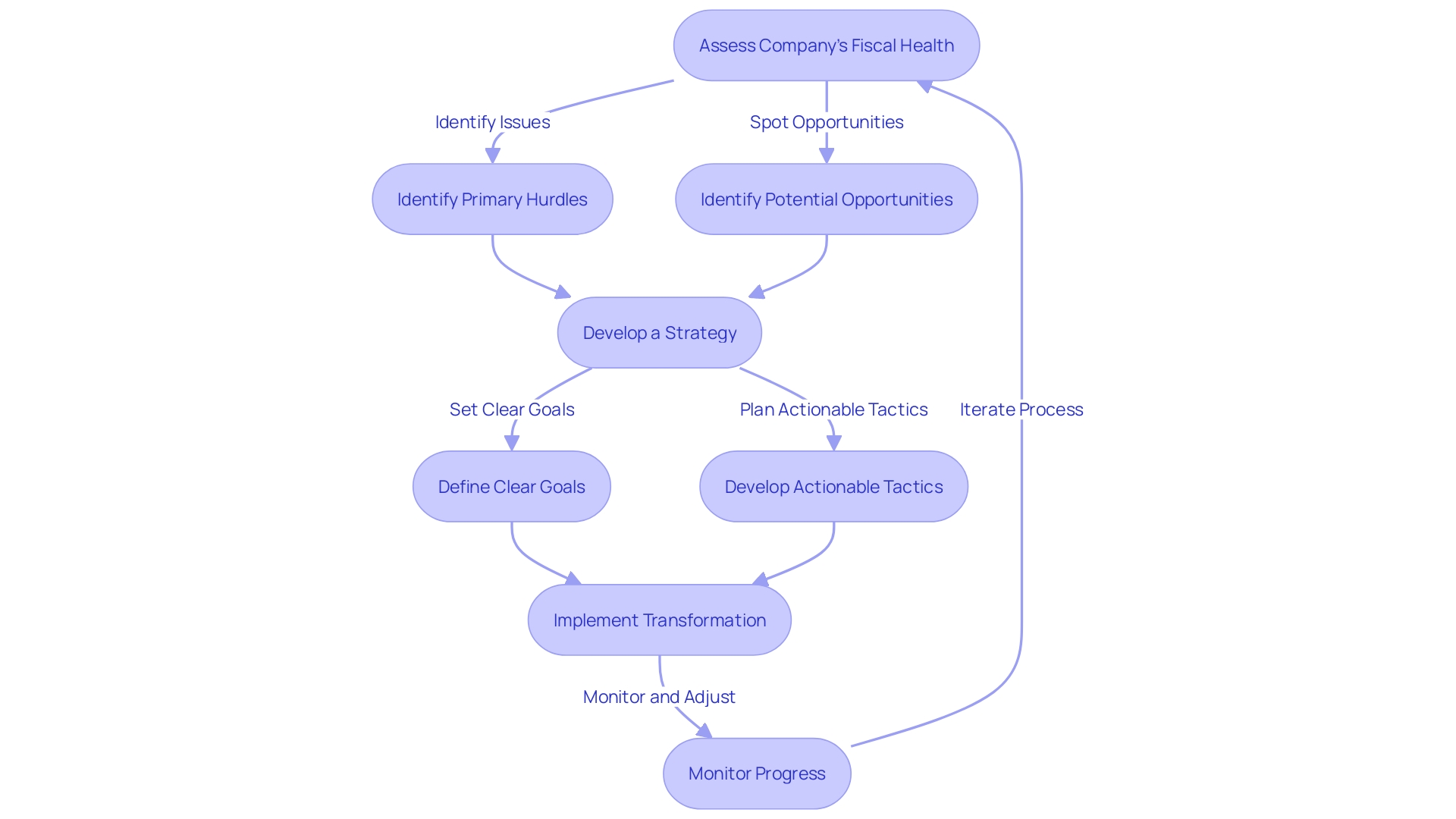
Execution and Management
The implementation stage of a business turnaround is pivotal, demanding meticulous coordination and decisive action. At the helm, CFOs marshal resources, spearheading initiatives such as cost reduction, operational efficiency, contract renegotiation, and the creation of new revenue pathways. This phase calls for robust leadership to navigate the evolving landscape, underscored by clear directives and a readiness to adjust strategies in response to fluctuating market dynamics.
Adapting to such dynamics often necessitates the incorporation of external expertise. Hiring consultants can offer a boost of specialized expertise, especially advantageous during intricate technology endeavors that, as data shows, have a success rate ranging from 16% to 30%. These professionals bring to the table a trove of insights for optimizing processes, enhancing performance, and mitigating risks associated with digital transformations.
In tandem with expert guidance, a thoroughly articulated action plan serves as a vital tool, akin to a navigational chart steering the organization towards its targets. It encapsulates the collective wisdom of all stakeholders involved, ensuring that the journey from the status quo to the envisaged future is well-coordinated and effectively communicated.
This strategic execution is not without its challenges. Market competition and growth opportunities, identified by 51% of businesses as catalysts for change, require agility and foresight. Complementing this, a well-defined project timeline is indispensable, providing a visual chronicle of milestones and tasks, and facilitating a synchronized progression towards completion.
As organizations face a variety of changes, from cultural shifts to mergers, the significance of a digital-first approach becomes crucial. Yet, with a staggering 70% of digital initiatives falling short, the stakes are high. CFOs must ensure that the strategic execution is supported by an engaged leadership and a clear vision, as emphasized by the thought leadership of management experts and highlighted by recent trends in the corporate world, such as Byju's proactive approach to involving shareholders in its transformation story.
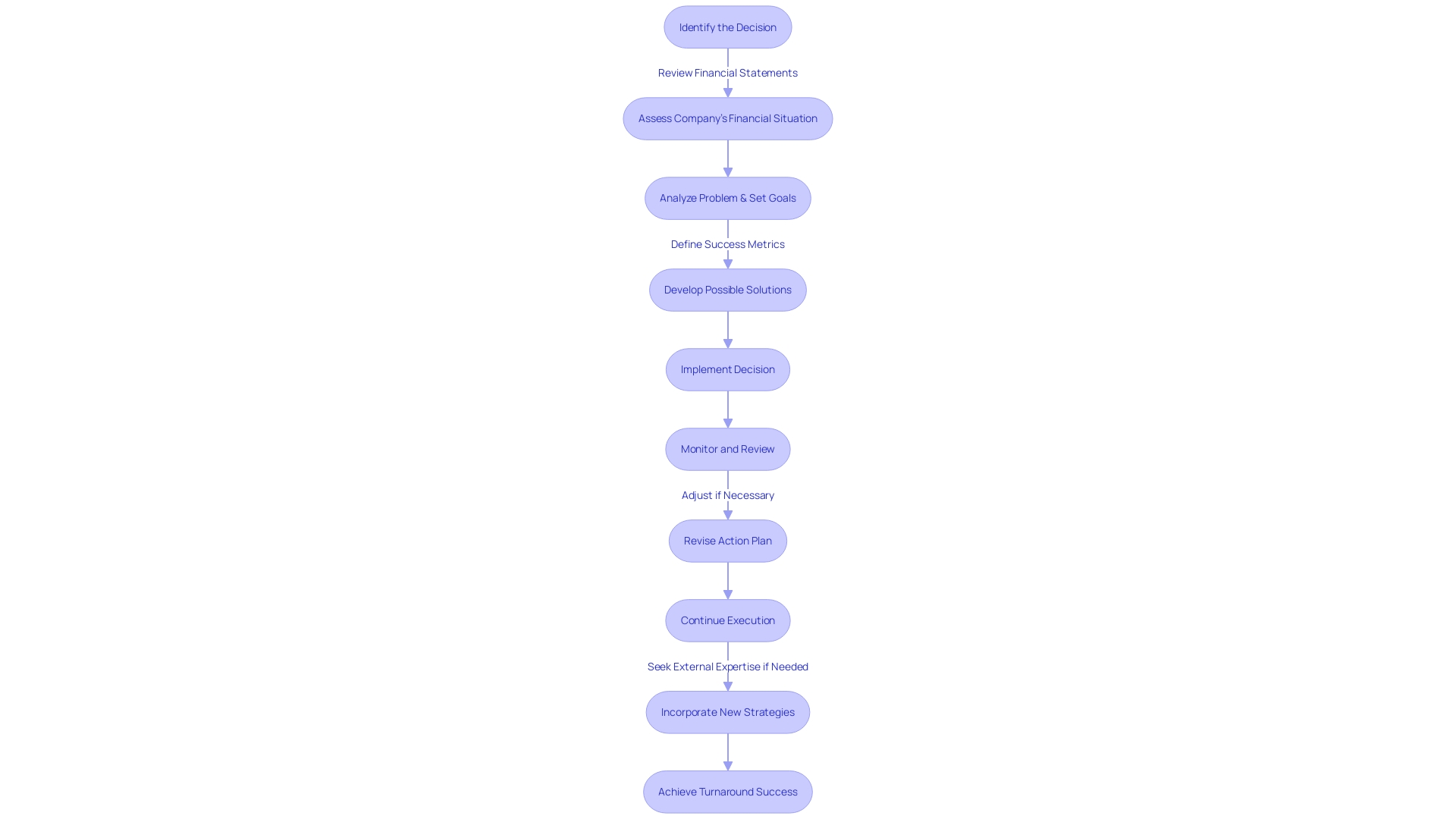
Post-Turnaround Evaluation and Continuous Improvement
After a turnaround, it's crucial for CFOs to undertake a meticulous evaluation of the strategies implemented during the transformative phase. This critical analysis delves into the financial outcomes, pinpoints the efficacy of the changes implemented, and uncovers any persistent obstacles that could derail progress. Such a post-turnaround assessment is not a mere routine check but a strategic endeavor to cement the foundation for enduring growth and profitability. It incorporates lessons from various sectors, like the insights gleaned from the United Schools Network's application of Deming’s principles, which underscore the importance of iterative learning and continuous improvement. Moreover, by embracing a regenerative mindset, as emphasized in recent industry talks, CFOs can cultivate an atmosphere where the organization not only rebounds but flourishes by infusing creativity and sustainability into its fundamental activities. Adopting this approach ensures that enterprises do not just rebound but also develop resilience and agility for future challenges.
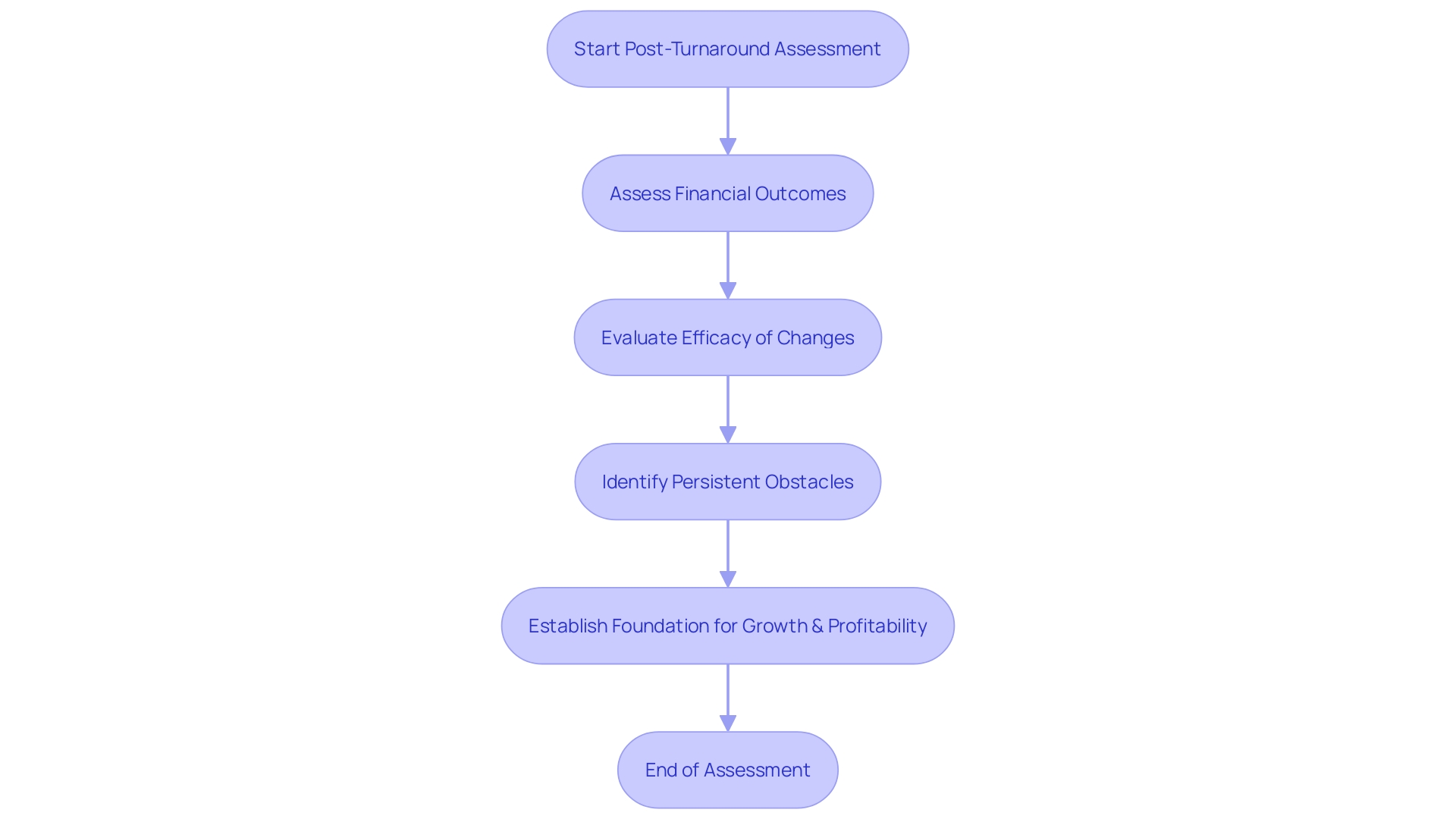
Best Practices for Turnaround Success
Chief Financial Officers (CFOs) who want to achieve a transformation in the company must be watchful in detecting financial difficulties at an early stage, prepared with proactive approaches, and resolute in their actions. It is critical to communicate effectively and manage stakeholder relationships while fostering collaboration both internally and externally. Moreover, anchoring every decision to the goal of long-term sustainability is vital.
For instance, a notable case involved a major hotel's restaurant that, despite its prime city center location, struggled with increasing food and beverage sales. The turnaround strategy hinged on leveraging its location to draw more diners, ultimately resulting in a significant uplift in sales and excellent reviews within the first week.
Additionally, understanding the distinction between change, which is the external actions taken, and transition, the internal processing of these changes, is essential. Successful company transitions, such as mergers, acquisitions, or shifts in company culture, require not just operational changes but also a mental shift across the organization.
In line with our Global Economic Outlook for 2023-25, despite external economic pressures like the Gaza conflict's limited impact on the EU, businesses must focus on social resilience in the face of rising living costs. As such, developing a process for listening to signals from your team and customers is crucial for timely and effective change management.
When considering a consultant's role, their expertise can bring top benefits, including industry-specific insights, trend analysis, and operational optimization. Notably, given that technology project success rates range from a mere 16% to 30%, consultants can provide the necessary support for project management, including fostering executive sponsorship and change management, to avoid failure and resource wastage.
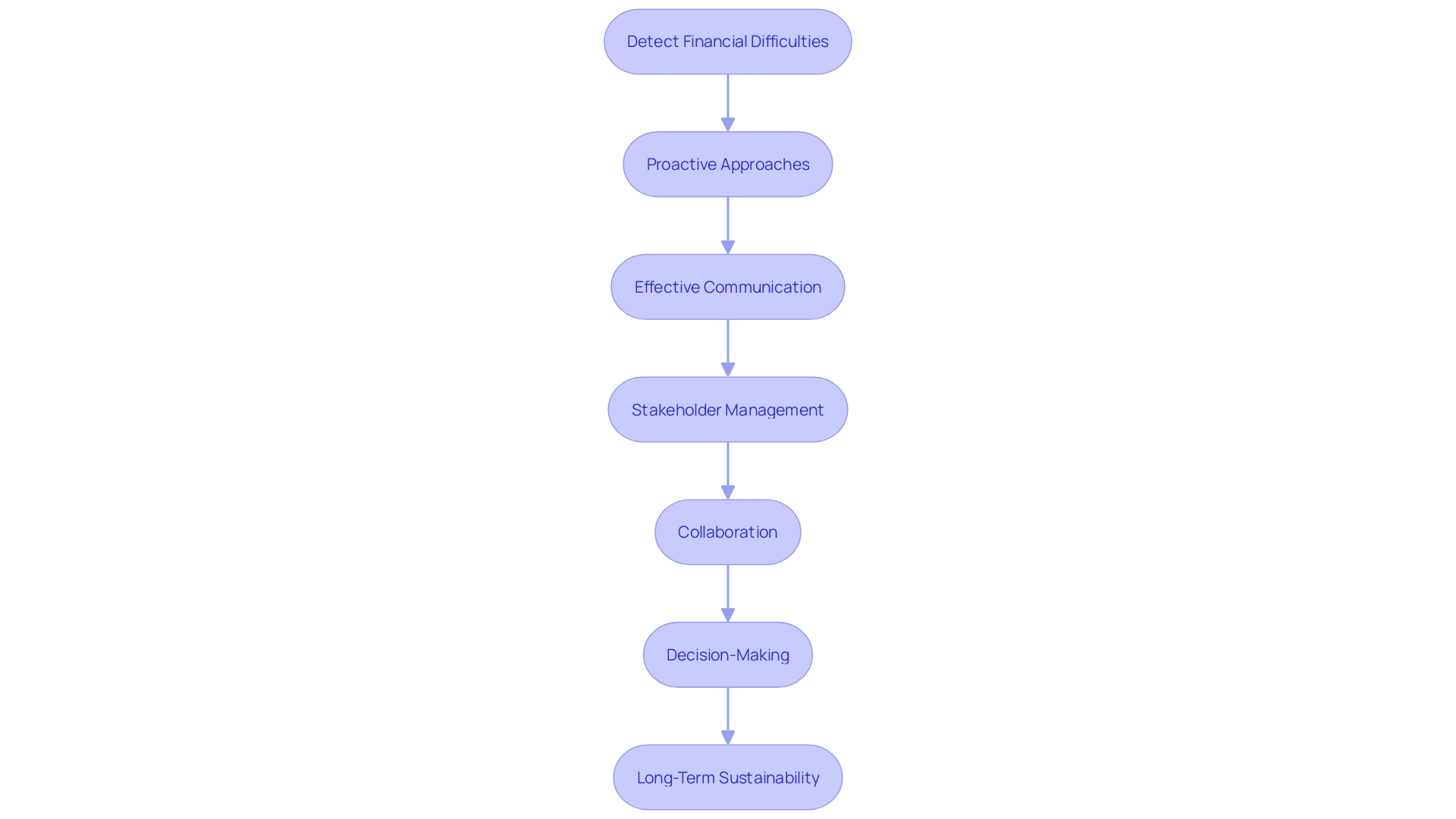
Strategies for Optimizing Turnaround Time
CFOs leading corporate revitalization efforts must carefully coordinate the time frame to achieve prompt and effective results. Strategic prioritization of crucial tasks, combined with the incorporation of cutting-edge technologies and automation, can greatly shorten the timeline of a transformation. Streamlining the decision-making process is another pivotal factor, as it accelerates the pace at which critical choices are made, thereby fast-tracking the path to recovery. Additionally, galvanizing cross-functional teams to work collaboratively ensures a concerted effort towards organizational revival. The collective measures are instrumental in restoring financial equilibrium and enabling the swift resumption of standard operations, which is the cornerstone for businesses aiming to bounce back from setbacks.
Effectively managing the time frame does not only concern the speed of execution but also the quality and impact of the decisions made. To illustrate, a development process that scrutinizes product requirements to focus on essential features over 'nice-to-haves' can streamline market entry and reduce complexity. This approach underscores the importance of user experience (UX) principles, which not only ensure technical efficacy but also foster user satisfaction, leading to cost savings in training and support.
In the realm of data sourcing and procurement, the ability to swiftly identify and integrate valuable data sets can be a game-changer, offering a competitive edge. As emphasized by OODA's recent strategic intelligence report, the adoption of cutting-edge technologies like AI may require patience to yield returns, but ultimately enhances efficiency and profitability. Similarly, in the healthcare sector, leveraging digital data for informed decision-making can pave the way for improved patient outcomes and operational excellence.
To lead with data-driven strategies, CFOs must pose incisive questions to comprehend the financial landscape, appraise the organization's position, and determine necessary operational shifts. Moreover, articulating the impact and trade-offs of financial decisions is crucial. For instance, evaluating the benefits of employee engagement activities against costs can reveal their efficacy in boosting productivity.
The integration of financial insights with human capital management is equally vital. The partnership between a Chief People Officer (CPO) and a CFO is a strategic alliance that bridges the gap between human and financial capital, offering a holistic view of the organization's resources. By comprehending the intricate connections between different financial aspects, CFOs can navigate the complexities of corporate transformation with accuracy and foresight.
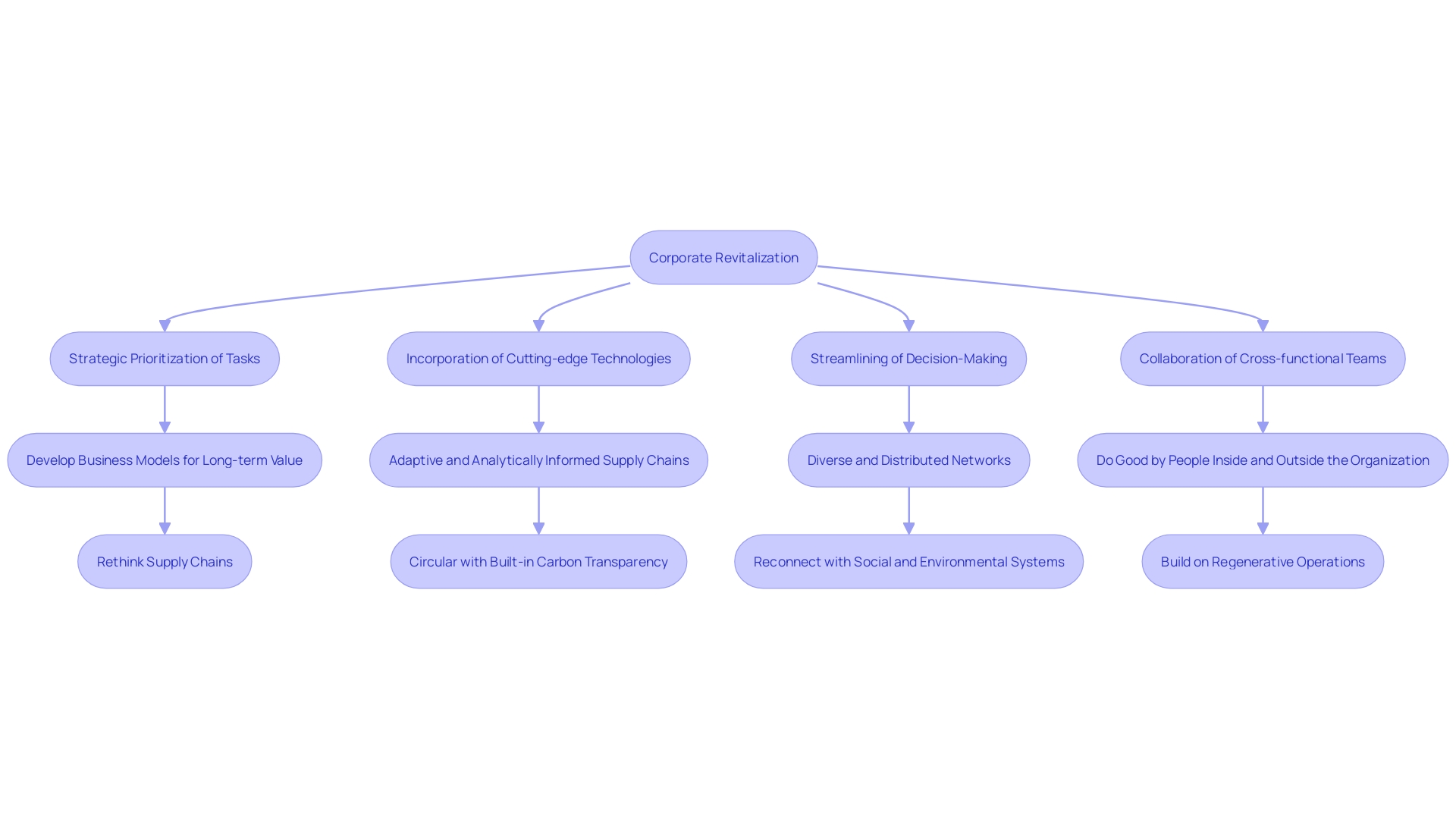
Emerging Technologies and Future Trends
In the dynamic world of business, staying ahead of the curve is paramount for successful turnarounds. Embracing cutting-edge technologies such as artificial intelligence, data analytics, and cloud computing can revolutionize operations. These advancements are not just buzzwords; they are the engines of innovation that drive informed decisions and operational efficiency. For instance, Jubilant Ingrevia's Acetic Anhydride Plant, Asia's largest, leverages digital transformation to manage complex processes with a lean team, illustrating how technology can facilitate market dominance with cost and quality leadership. Similarly, the digital future of healthcare showcases how data empowers precise diagnostic testing, streamlining the pathologist's workload from manual review to enhanced patient care. As we witness Ai's dominance in 2023, the importance of integrating these technologies is clear—they are essential tools for CFOs aiming to steer their organizations toward long-term prosperity in a competitive market.
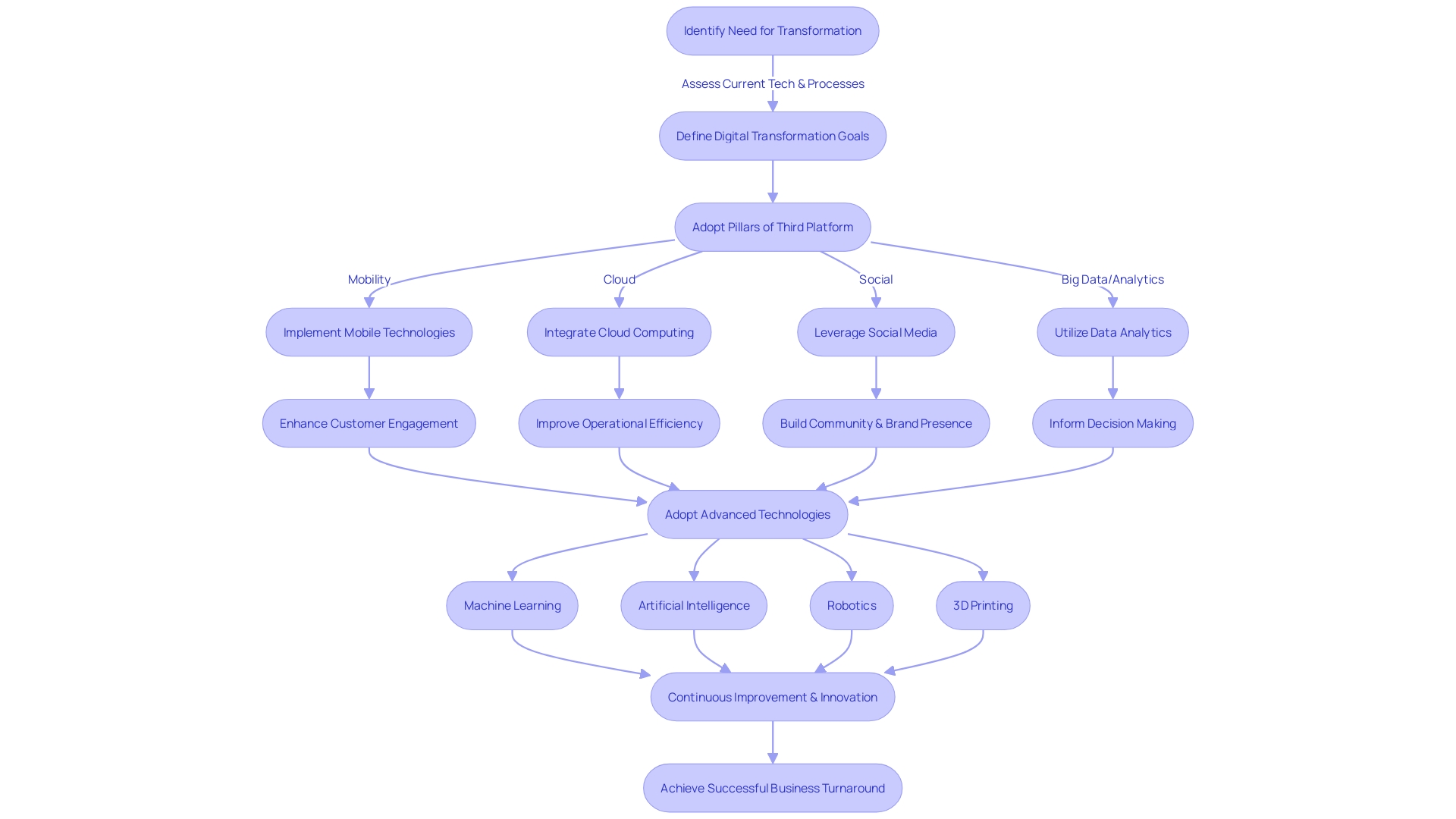
Conclusion
In conclusion, business turnaround strategies are crucial for organizations facing financial distress, and they require a comprehensive approach that combines financial planning with astute management techniques. Nets, a provider of digital payment solutions, embarked on a project to revolutionize information delivery and enhance user engagement, reflecting the importance of reforming internal processes for tangible improvements. Consultants play a vital role in providing specialized knowledge and fresh ideas, leading to cost savings and successful project outcomes.
The process of a turnaround project consists of three phases: planning and preparation, execution and management, and post-turnaround evaluation for continuous improvement. CFOs must carefully navigate each phase, crafting a detailed project proposal, coordinating complex transitions, and assessing outcomes against initial objectives. Proactive strategies, effective communication, stakeholder management, and a focus on long-term sustainability are essential for successful turnarounds.
To optimize turnaround time, CFOs should prioritize tasks, leverage advanced technologies and automation, streamline decision-making, and foster cross-functional collaboration. The integration of emerging technologies like artificial intelligence and data analytics is crucial for future success in a competitive market. By embracing these strategies and trends, CFOs can navigate business turnarounds with precision and drive their organizations towards long-term prosperity.
In summary, CFOs must be confident and action-oriented in their approach to business turnarounds, implementing practical advice and solutions. By following the three phases of a turnaround project and adopting best practices, CFOs can successfully lead their organizations through periods of financial distress and towards sustainable growth. Embracing emerging technologies and staying ahead of future trends will further enhance their ability to drive transformative change and ensure long-term prosperity.




